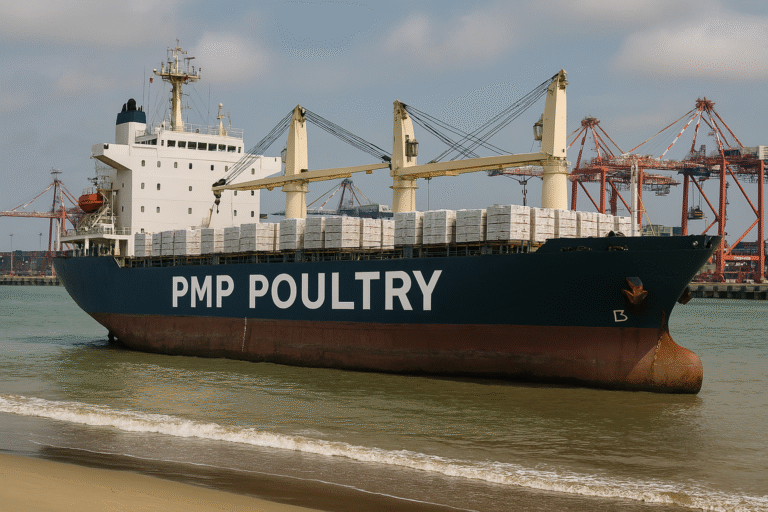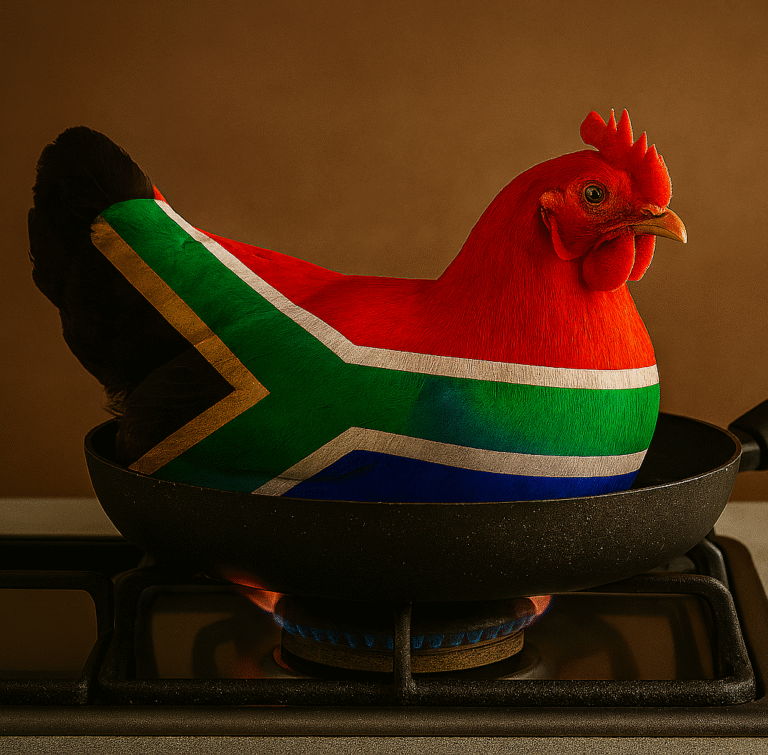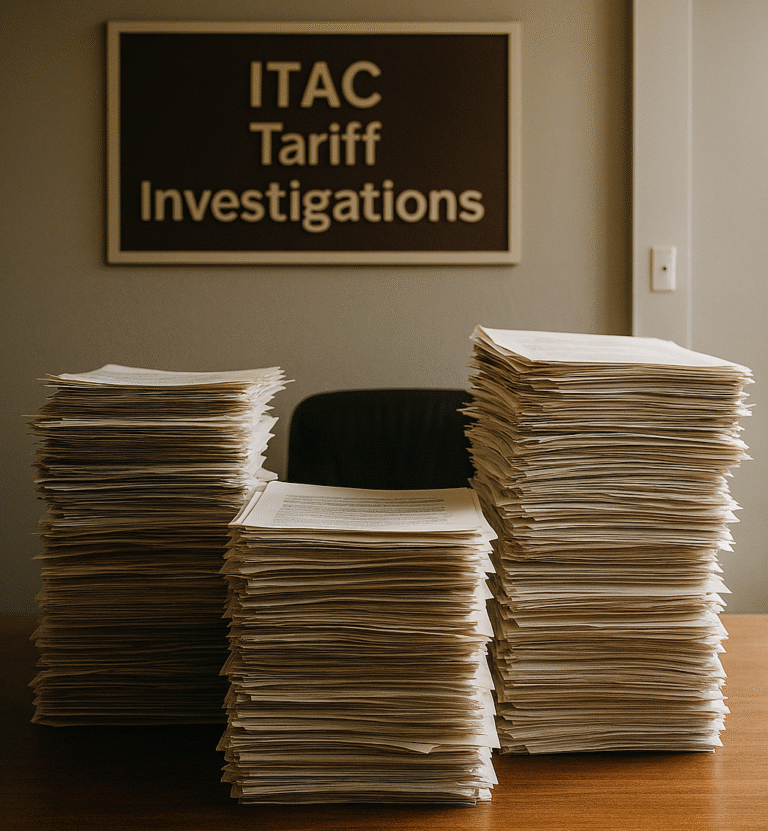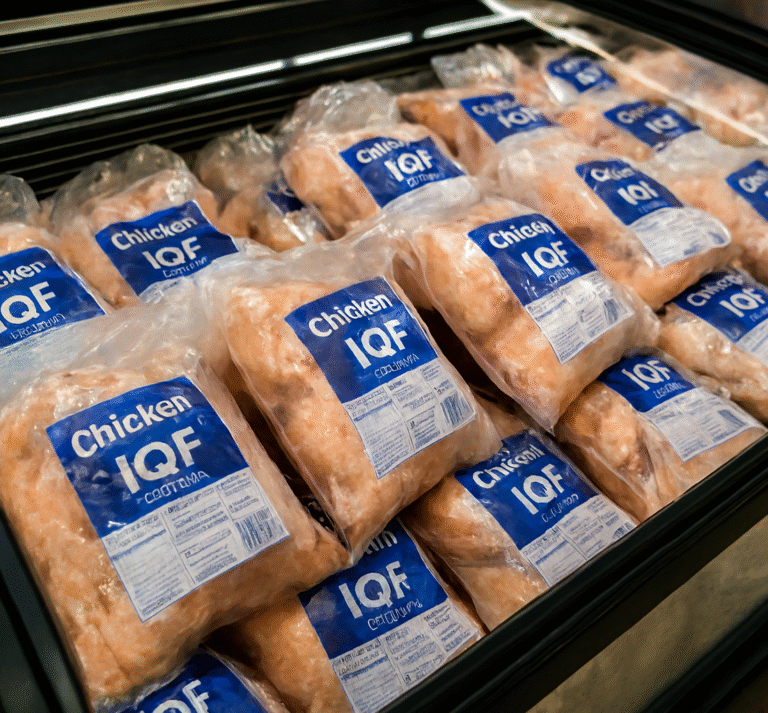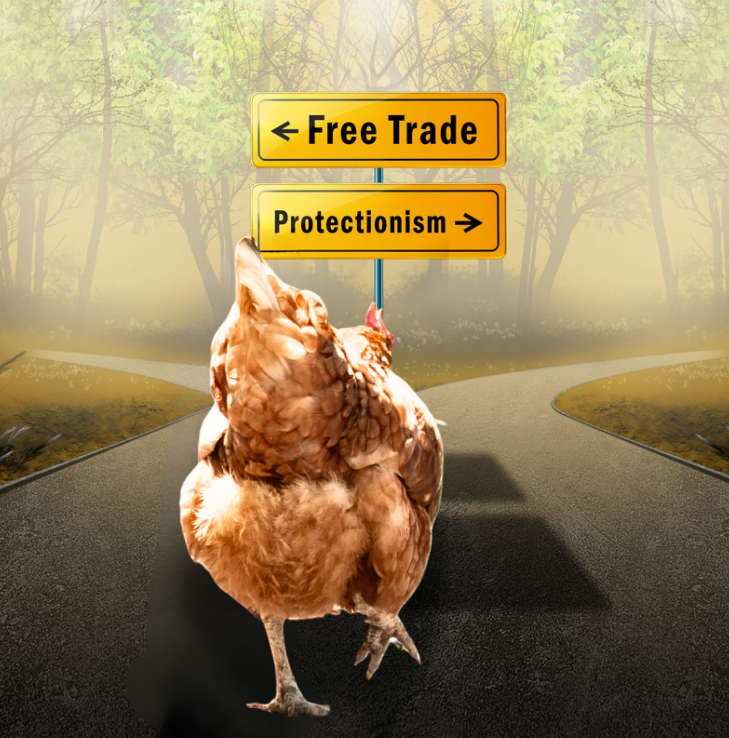Despite the ambitions of the Poultry Master Plan (PMP), South Africa’s poultry export strategy remains hamstrung by structural blind spots, regulatory inertia, and a domestic industry reluctant to evolve beyond its comfort zone.
This article explores the overlooked realities facts behind the export bottlenecks, and the key drivers responsible for unlocking export growth.
The PMP’s export growth strategy blind spots
The PMP sets export targets of 3–5% of production by 2023 and 7–10% by 2028, focusing primarily on cooked poultry meat due to its lower sanitary risk profile. But beneath the surface, three critical blind spots persist:
-
Insufficient local production capacity
Essentially, there is no surplus poultry available for export. Despite a 1% YoY poultry production increase in 2024, South Africa still struggles to meet domestic demand, let alone produce surplus volumes for export. Emerging farmers remain under-capacitated, and idle slaughter capacity (21.5 million birds/week vs. 22.5 million capacity) reflects systemic underutilisation.
-
Substandard SPS compliance for fresh/frozen chicken
South Africa lacks the veterinary infrastructure and residue monitoring systems required for fresh poultry exports to high-value markets like the EU and UK. This is likely why SAPA pivoted to cooked exports, which bypass many of these hurdles.
-
Underdelivered support for emerging farmers
While DALRRD has backed 42 poultry projects under CASP (Comprehensive Agricultural Support Programme), rural producers still face poor infrastructure, high feed costs, and limited access to export networks. Without scalable support, transformation goals remain aspirational.
In a recent stakeholder update on the progress with the Master Plan, DTIC’s Ncumisa Mcata-Mhlauli highlighted that the first phase of the PMP garnered R2.02-billion of investment by major companies in the sector since the plan’s inception in 2019, against SAPA’s target of R1.5-billion. The funds have been directed to supporting poultry projects and small-scale farmers.
The PMP also acknowledges urgent challenges facing the sector, including cost of feed, scale of production, inability to export, and transformation requirements.
Exporting fresh chicken: A process few are willing to venture
Exporting fresh or frozen poultry to global markets is a high-bar process:
Sanitary & Phytosanitary (SPS) requirements & certification bottlenecks
To qualify, South Africa must have a competent veterinary authority overseeing the entire food chain, accredited labs, and approved facilities that pass ongoing inspections for animal health, public safety, and residue monitoring.
Facilities must pass regular inspections and comply with World Organisation for Animal Health standards.
SAPA asserts that it’s poultry industry largely meets international health standards, but exports to the EU are slow due to a shortage of certified veterinarians to provide essential sanitary and phytosanitary certification.
These structural and regulatory hurdles are delaying export readiness.
Snapshot: Poultry exports procedure

Export quantities
- Export volumes remain at ~2% of production
- For the year ending June 2025, total chicken exports decreased by 19% year-on-year
- SA-origin exports decreased by 6% YoY, totalling 37,932 metric tonnes.
Export statistics (figures ending March 2025)

Industry complacency
With long-standing anti-dumping duties and tariff protections in place, local producers have successfully removed meaningful import competition. Mechanically Deboned Meat (MDM), which is not produced locally, remains the only significant import and poses no competitive threat.
Local producers have grown comfortable exporting to SADC countries, where standards are lower and product mixes mirror domestic preferences.
This “low-hanging fruit” approach seems to have disincentivised investment in SPS upgrades needed for global market access.
Thriving beef exports
South Africa’s beef export sector has shown remarkable resilience and growth over the past financial year, rebounding from years of disease-related setbacks and biosecurity concerns.
Exports surged by 25% in the first three quarters of 2024, reaching a value of $136 million, with key markets including China, Egypt, the UAE, and Saudi Arabia.
This upswing was driven by improved disease control, strategic government-industry collaboration, and the opening of new markets such as Saudi Arabia after a two-decade hiatus.
The sector’s proactive stance in strengthening veterinary services, investing in vaccine production, and promoting premium South African beef globally has positioned it as a serious contender on the international stage.
So why does South Africa’s poultry sector remain grounded in its export ambitions? Despite being the largest contributor to agricultural GDP, the industry continues to comfortably focus on domestic dominance and regional exports to SADC countries.
Who’s responsible for export growth?
Responsibility for driving progress rests principally with three entities:
-
The Department of Agriculture, Land Reform and Rural Development (DALRRD)
DALRRD facilitates market access, ensures compliance with international phytosanitary standards, and supports exporters through regulatory protocols. It must accelerate regulatory reforms, fund veterinary capacity, and enforce compliance to unlock new markets.
-
Local Producers
Producers must invest in SPS upgrades, expand production, and support emerging farmers. Their current reluctance to pursue global exports despite tariff-free access to the EU is a missed opportunity.
-
Department of Trade, Industry and Competition (DTIC)
The DTIC drives the PMP export strategy by promoting market access, supporting export readiness through the National Exporter Development Programme, and safeguarding the poultry industry via trade policy and export incentives.
Why healthy trade matters
Balanced import and export trading is not a threat but a safeguard. It:
- Secures food security
Imports fill supply gaps during disease outbreaks or production shortfalls
- Diversifies revenue
Exporting high-value cuts can improve carcass valuation and profitability
- Stimulates industry growth
A competitive, open market drives innovation, job creation, and resilience
According to the WEF Global Risks Report 2025, geoeconomic confrontation (sanctions, tariffs, investment screening) is one of the top long term risks that can be addressed by global treaties and arrangements.
The report goes on to recommend diversification of supply chains as a counter measure:
“For organisations, one of the big lessons taken from the ongoing conflicts is the need for supply chain resilience and diversification. With geopolitical volatility likely to remain high over the next two years, organisational investment in geopolitical risk foresight and risk management is a must.
When the level of uncertainty around conflicts or potential conflicts is high, scenario planning exercises can be a valuable tool to help organisations prepare for a range of different outcomes. Organisations need to consider not only whether their suppliers and supply routes are vulnerable to conflicts, but also what the reputational risks are of partnering or doing business with counterparts that are in any way party to a conflict.”
Without meaningful changes from DALRRD and producers, South Africa faces stagnation in a sector that should be leading the continent in poultry exports.
Economic diversification and balanced trade are essential economic safeguards the country cannot continue to ignore at its peril.
